Goryeo-era sutra in gold and silver returns to Korea
By Hwang Dong-heePublished : June 16, 2023 - 19:38
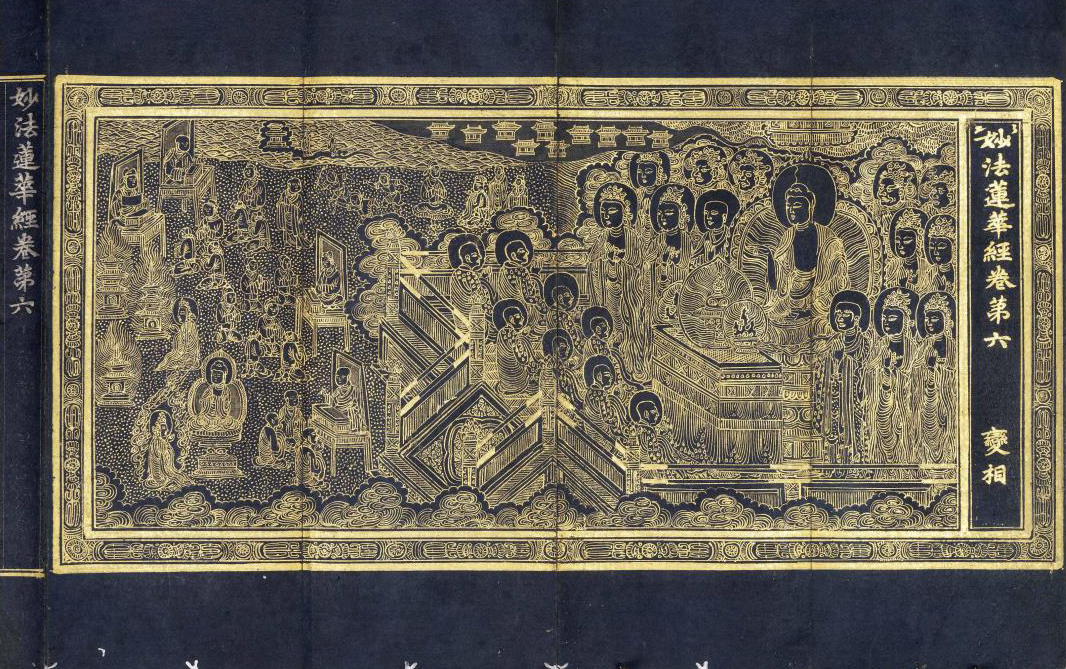
A Goryeo-era manuscript of a Buddhist sutra has been repatriated to South Korea from Japan.
The Cultural Heritage Administration and the Overseas Korean Cultural Heritage Foundation unveiled the manuscript -- Vol. 6 of Saddharmapundarika Sutra, also known as the Lotus Sutra -- during a press conference held at the National Palace Museum of Korea in Seoul, Thursday.
The sutra, bound in a folding screen format, is written in gold and silver paint on indigo-dyed paper. It is presumed to have been produced in the 14th century, during the latter part of the Goryeo Kingdom (918-1392), according to the CHA.
In Korean, "sagyeong" refers to hand transcribed Buddhist sutras. They were originally created to disseminate Buddhist teachings, but later came to be considered as a means to accumulate merit through transcribing the text or a way to make a wish for wellbeing. The production of transcribed sutras was popular in Korea, particularly during the Goryeo Kingdom.
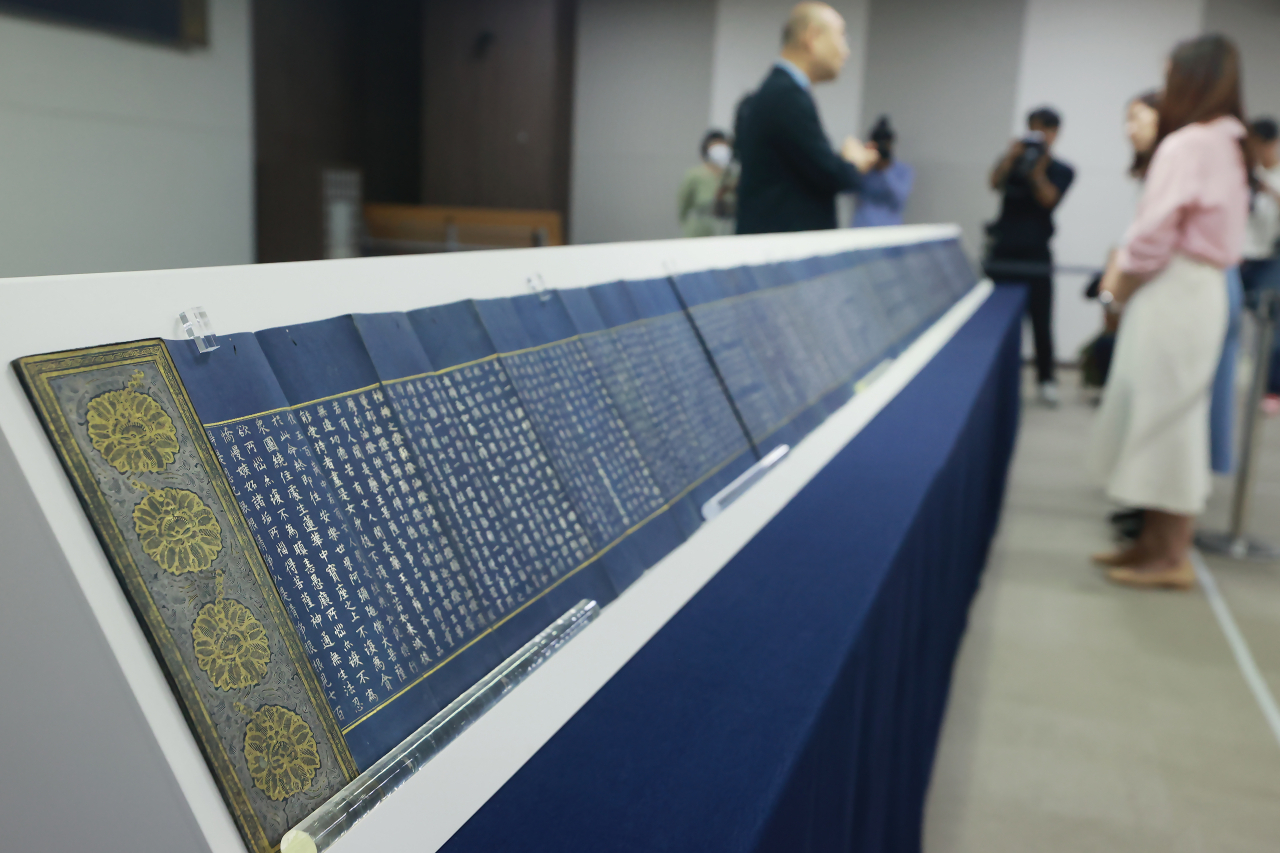
The returned artifact includes a front cover with four lotus flowers drawn vertically in gold, with vine patterns in silver filling the remaining space. On top of the flowers is an oblong frame in which the title of the sutra is inscribed.
Experts say it is difficult to ascertain the exact date of the production as there is no inscription. Most Lotus Sutras consist of seven volumes -- the final volume usually revealing when and by whom the manuscript was produced -- but this transcription has only six volumes.
"Judging from the composition and the writing skills, it is presumed that it was done by a monk who specialized in the highest level of transcription," said Bae Young-il, director of the Seongbo Museum at Magoksa.
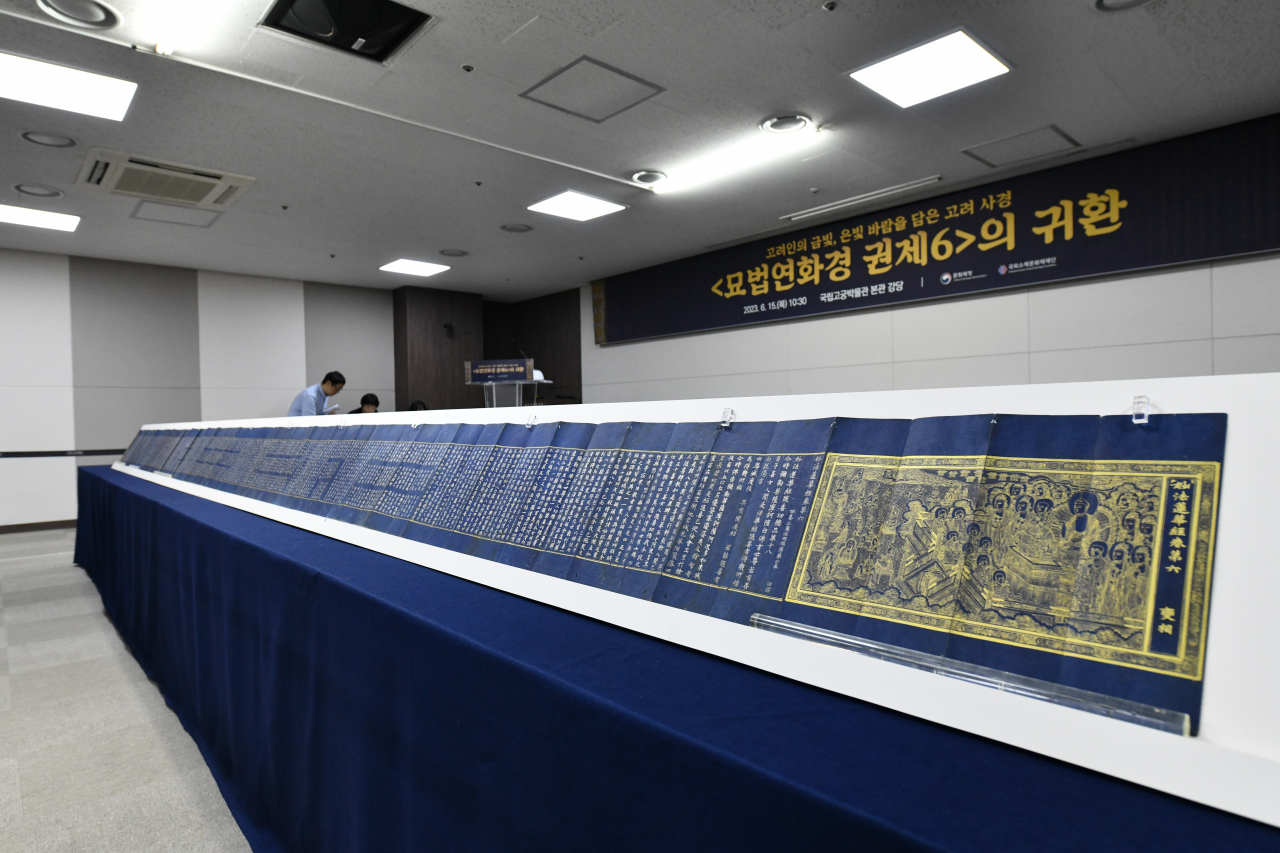
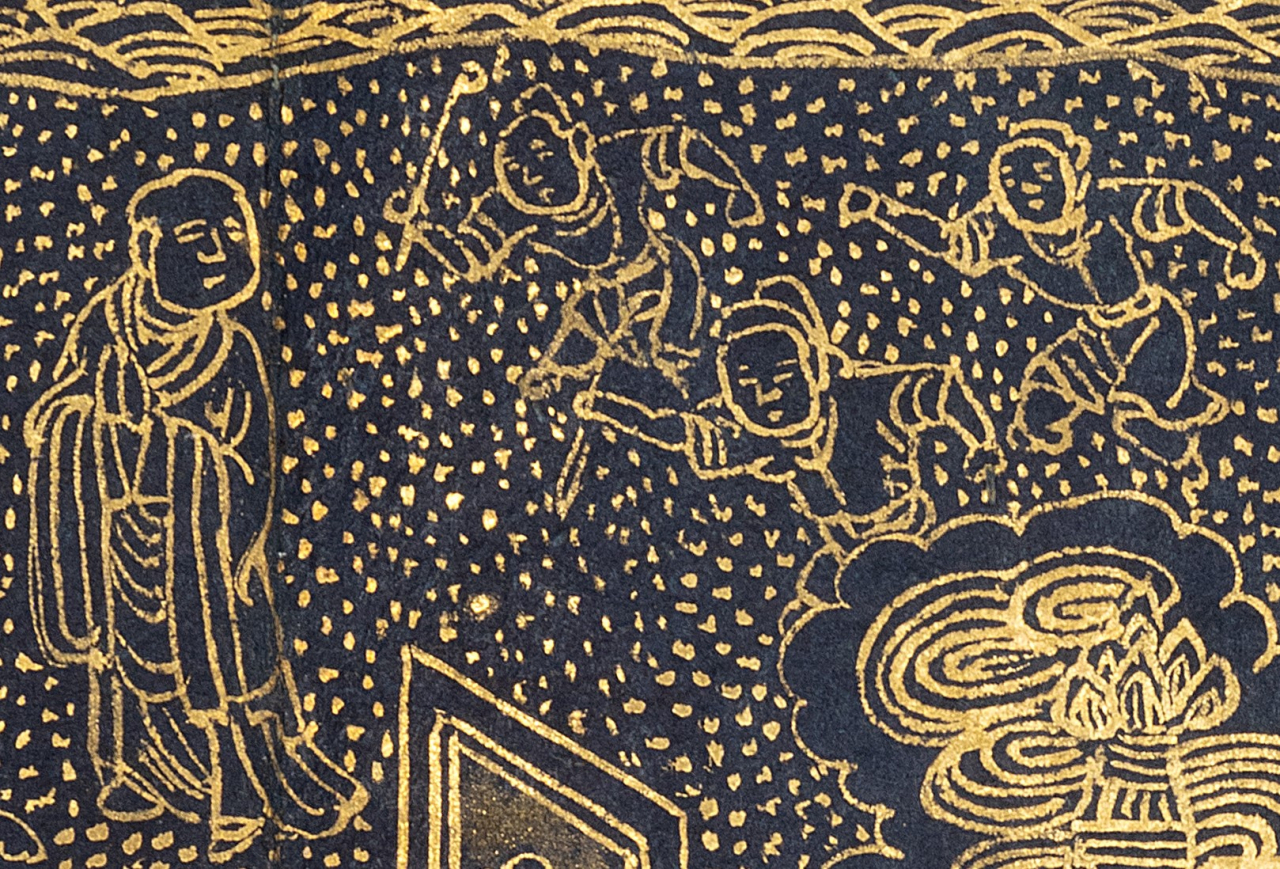
It is also noteworthy that the text of the sutra is written across 108 pages with six vertical lines per page, according to the experts. The borders are drawn in gold and each character is written in silver.
"Each letter has a slightly different thickness and strokes. It seems it must have taken at least 15 days to almost a month to finish this transcription," said Kim Jong-min, a CHA official.
The Lotus Sutras centers on the principle that the path to becoming a Buddha is open to anyone.
Its illustration visually summarizes the contents over four pages. In the right portion is Shakyamuni Buddha preaching on the Lotus Sutra and his followers. To their left is a scene where Sadaparibhuta Bodhisattva says “All of you will become a Buddha” while angry people throw stones at him. Another scene illustrates Bhaisajyaraja Bodhisattva making an offering by sacrificing his body in a burning flame.
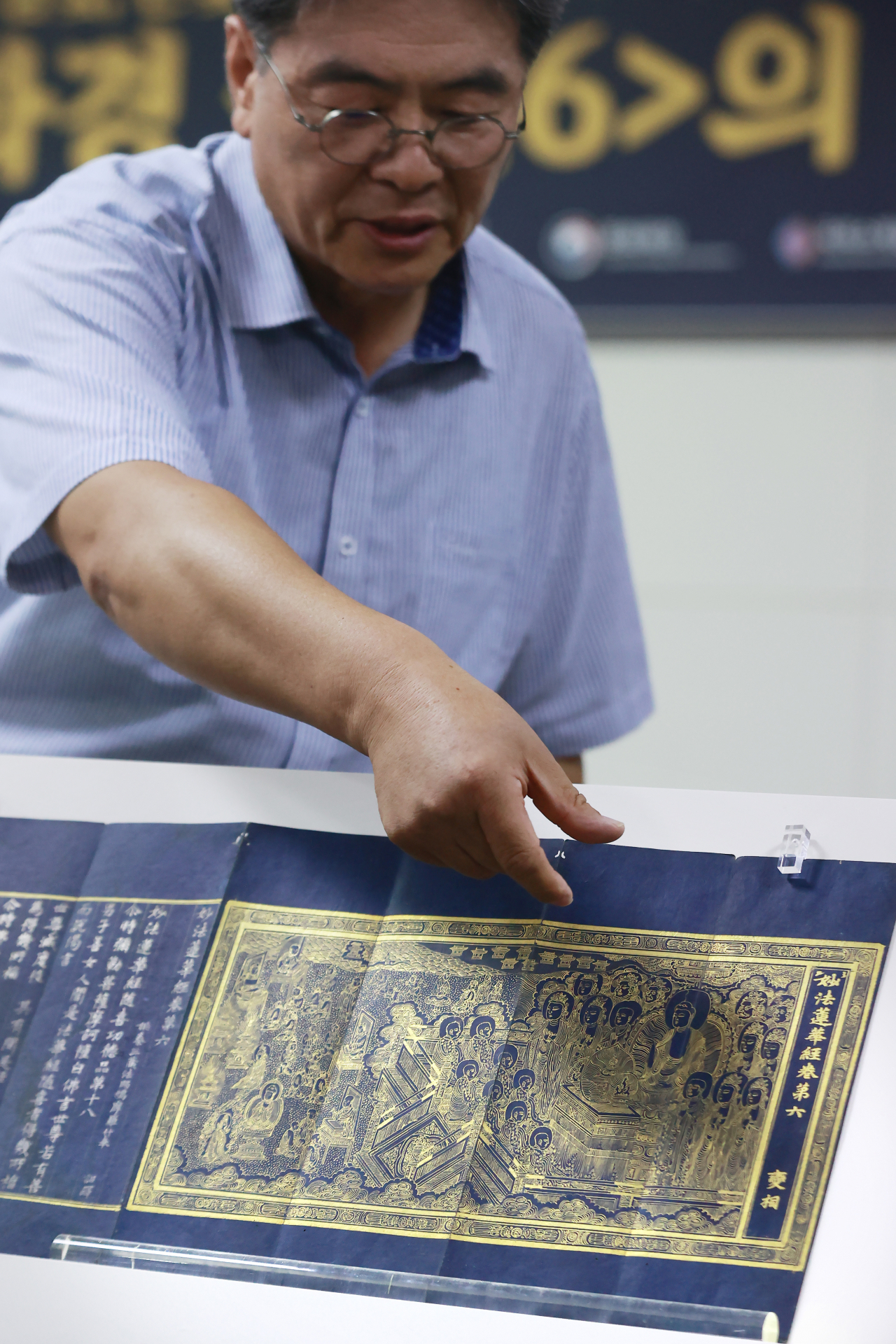
The existence of the repatriated copy was first confirmed in June last year, when a private collector in Japan expressed an intention to sell the relic to the OKCHF.
The previous owner, who is Japanese, purchased the sutra at a private auction in 2012. It is uncertain how the artifact was taken out of the country, according to the CHA.
The CHA and the OKCHF carried out a series of investigations and negotiations before bringing the sutra to Korea in March. The artifact will be stored and managed by the National Palace Museum of Korea. The public viewing of the repatriated heritage is yet to be decided.
"The repatriated Lotus Sutra has excellent religious and aesthetic value as a Buddhist cultural heritage. It is expected to be used for various research and exhibitions in the future, as it is in good condition even after about 700 years have passed," said CHA head Choi Eung-chon.
It is estimated that about 150 copies of the Buddhist sutras remain in Korea and abroad. Experts estimate that about 60 are located abroad, including Japan and the US.




![[KH Explains] No more 'Michael' at Kakao Games](http://res.heraldm.com/phpwas/restmb_idxmake.php?idx=644&simg=/content/image/2024/04/28/20240428050183_0.jpg&u=20240428180321)











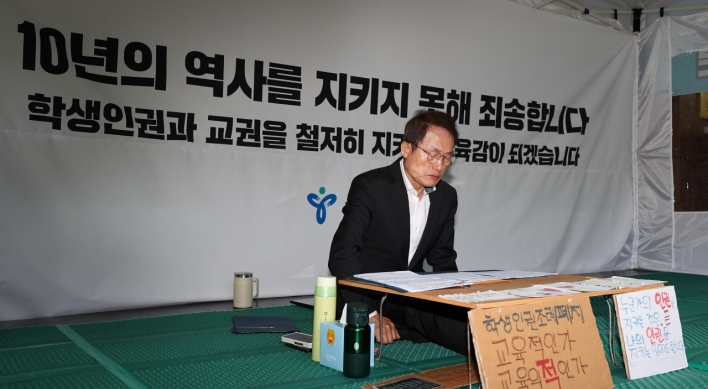

![[Herald Interview] Mistakes turn into blessings in street performance, director says](http://res.heraldm.com/phpwas/restmb_idxmake.php?idx=652&simg=/content/image/2024/04/28/20240428050150_0.jpg&u=20240428174656)
